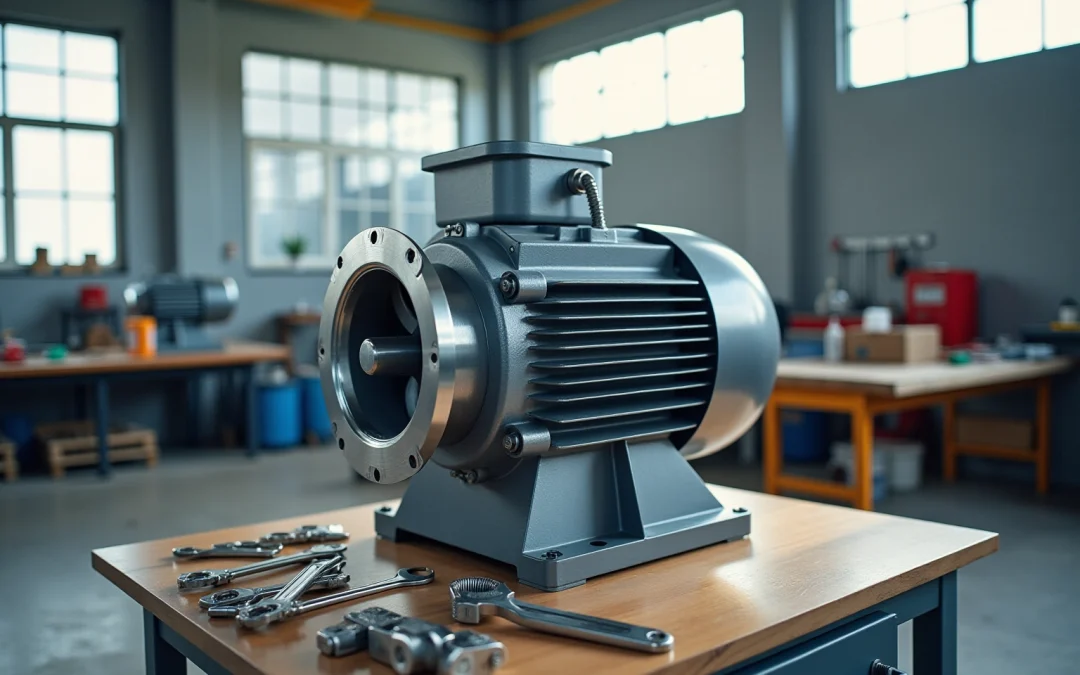Overview
This article addresses prevalent issues related to axial fan motors and presents ten effective solutions to mitigate these challenges. It underscores the significance of regular maintenance, proper installation, and environmental protection strategies. These elements are essential for boosting the reliability and longevity of axial fan motor systems.
Introduction
Addressing axial fan motor problems is essential for ensuring efficiency and reliability in various cooling applications. Common issues, such as overheating and electrical failures, present significant challenges for engineers, necessitating effective solutions. This article delves into ten practical strategies designed to tackle these prevalent problems, empowering readers to enhance both the performance and longevity of axial fan motors.
How can the implementation of these solutions revolutionize the operation of cooling systems and mitigate potential failures?
Gagner-Toomey Associates: Solutions for Axial Fan Motor Problems
Gagner-Toomey Associates stands at the forefront of addressing challenges related to the axial fan motor, delivering innovative solutions backed by extensive expertise in cooling technologies. Our corporate culture prioritizes respect for our customers’ time and needs, ensuring a consultative approach led by a highly experienced, entrepreneurial team that embodies curiosity and motivation.
By partnering with leading manufacturers, Gagner-Toomey guarantees that engineers gain access to the latest advancements in the design and enhancement of the axial fan motor. This unwavering dedication to excellence empowers us to provide that effectively address prevalent issues in the electronics sector, thereby enhancing reliability and efficiency in cooling applications.
Recent advancements in the axial fan motor technology, including the integration of smart functionalities and energy-efficient designs, further exemplify our commitment to meeting the evolving needs of the industry.
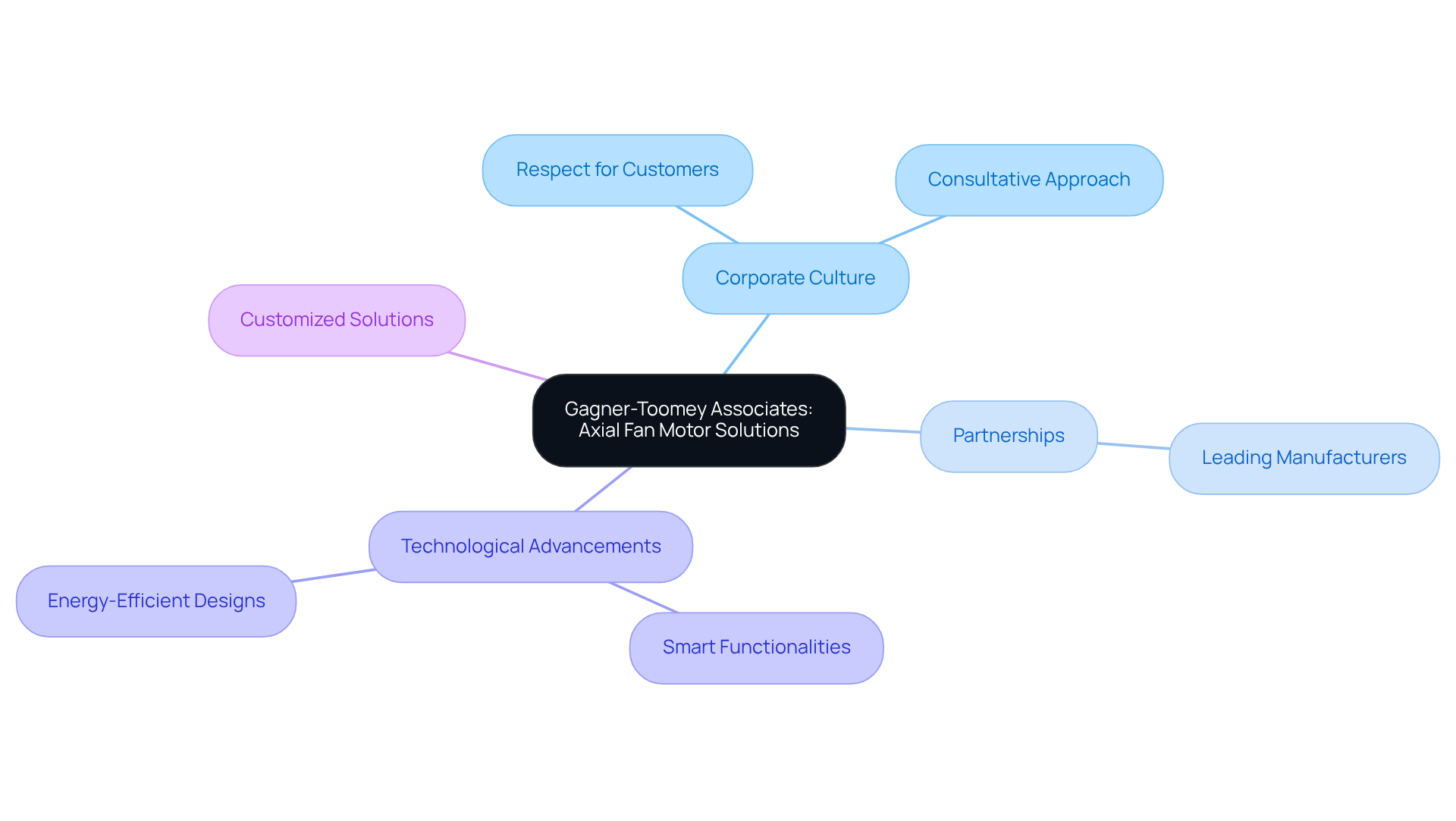
Overheating: Causes and Prevention Strategies
Overheating in axial fan motors presents a significant challenge, arising from factors such as insufficient airflow, excessive load, and inadequate thermal management. Insufficient cooling airflow, often a result of dust accumulation or blocked ventilation, can severely hinder performance. To mitigate these risks, it is crucial to ensure that the fan is appropriately sized for its application and that circulates around the engine. The implementation of thermal protection devices, including thermal overload relays, serves as an effective measure to monitor temperatures and automatically shut down the motor should it exceed safe limits, thereby preventing potential damage.
Regular maintenance practices, such as cleaning dust from fan blades and ensuring unobstructed ventilation, are vital for sustaining optimal cooling efficiency. Engineers underscore the importance of routine inspections to detect early warning signs of overheating, including excessive vibration, unusual noises, and burnt paint, which may indicate underlying issues. Furthermore, utilizing fans constructed from corrosion-resistant materials is essential, particularly in harsh environments, as this choice significantly enhances durability and minimizes the likelihood of overheating.
Effective thermal management strategies encompass monitoring operating conditions and avoiding excessive loads, which can lead to overheating and operational inefficiencies. For systems operating in extremely unclean environments, monthly or quarterly services are recommended to maintain efficiency. By adhering to these preventive measures, engineers can considerably extend the lifespan of the axial fan motor units and bolster overall system reliability.
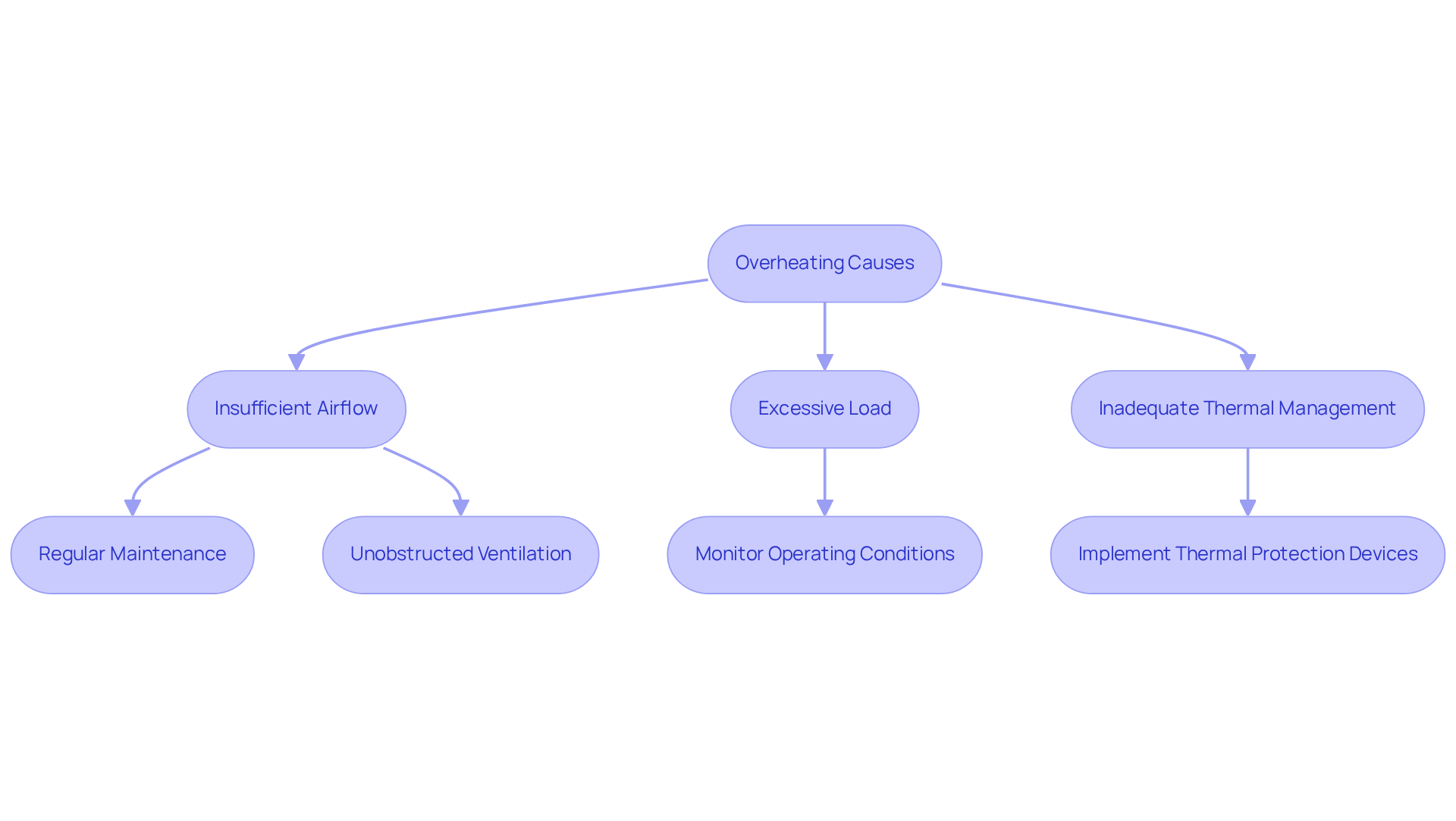
Vibration: Identifying Sources and Mitigation Techniques
Vibration in axial fan motors often arises from misalignment, imbalance, or worn components, which can significantly impair the motor’s performance. A study on forced-draft fans, for instance, demonstrated that vibration levels may surpass acceptable limits, resulting in operational inefficiencies. Regular inspections and vibration analysis are crucial for pinpointing the source of these issues.
Effective mitigation techniques encompass:
- Ensuring precise alignment of the axial fan motor during the installation process.
- Balancing the fan blades of the axial fan motor to alleviate operational stress, as excessive vibrations often arise from inadequate balancing.
- Prompt replacement of worn bearings; neglecting this can lead to costly repairs.
- Employing vibration-damping mounts to absorb excess vibrations, safeguarding the device and enhancing its lifespan.
Laxmikant S. Dhamande emphasizes that vibration monitoring facilitates real-time identification of machinery problems. Successful cases of alignment and balancing in fan installations underscore the importance of these practices for optimal operation. Engineers assert that addressing vibration challenges associated with the axial fan motor not only boosts efficiency but also prolongs equipment lifespan, ultimately contributing to more reliable cooling applications.
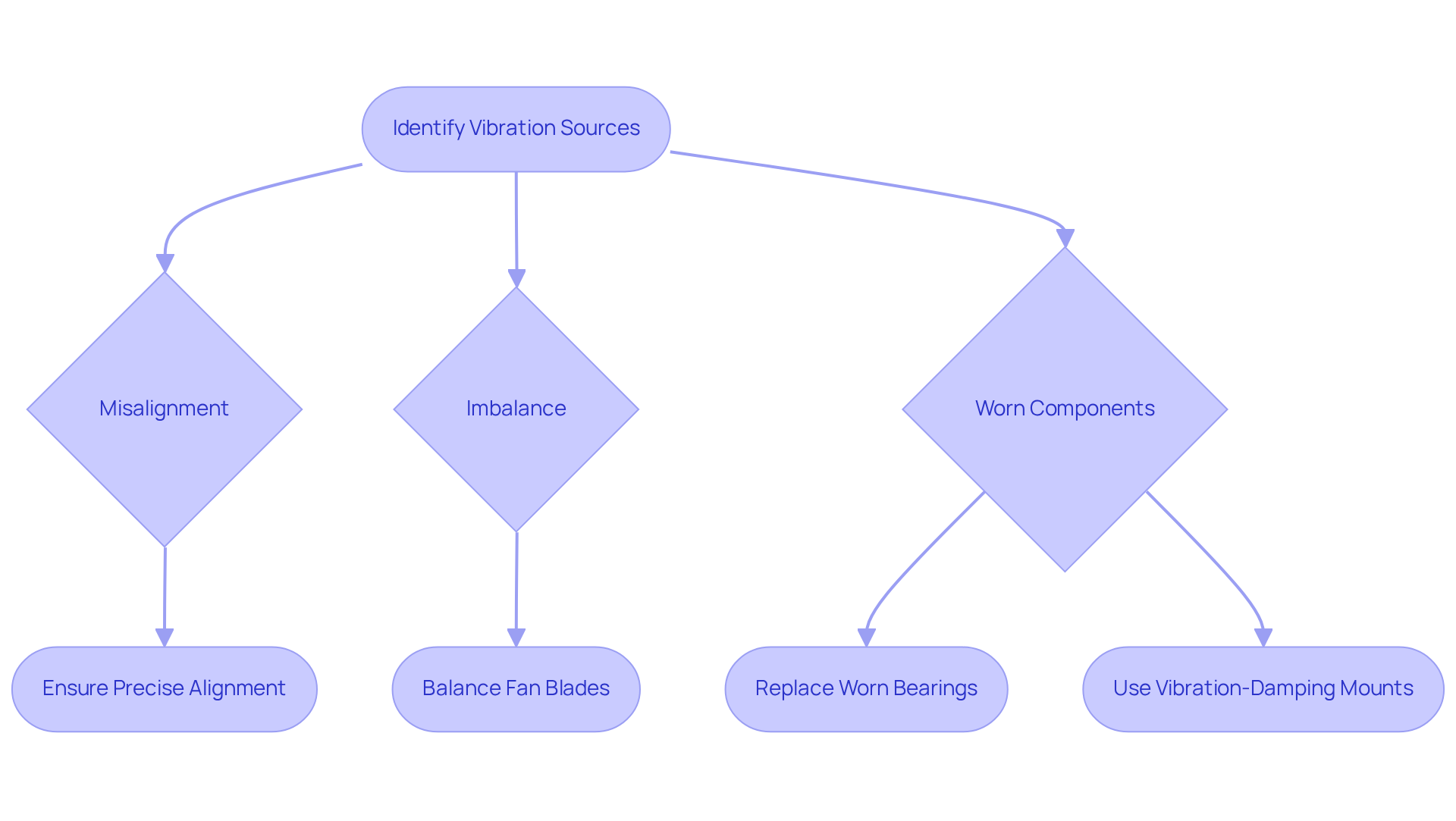
Electrical Failures: Diagnosis and Prevention Methods
Electrical failures in axial fan motors typically present as short circuits, open circuits, and insulation breakdowns. Diagnosing these issues effectively necessitates the use of multimeters for continuity and voltage level checks.
To prevent electrical failures, it is crucial to adhere to , utilize high-quality components, and conduct regular inspections of electrical connections to identify signs of wear or corrosion. Furthermore, integrating surge protection devices serves as a vital safeguard against voltage spikes, thereby enhancing the reliability of cooling systems.
Environmental factors, including dust, humidity, and extreme temperatures, can adversely affect fan reliability, leading to complications such as clogging and corrosion. Industry experts emphasize that proactive maintenance and monitoring of the axial fan motor are essential to avert these common electrical problems, ensuring optimal performance and durability.
Notably, statistics reveal that 51% of equipment failures stem from bearing issues, underscoring the importance of regular maintenance and monitoring for early signs of wear to prevent reduced airflow and overheating of machinery.
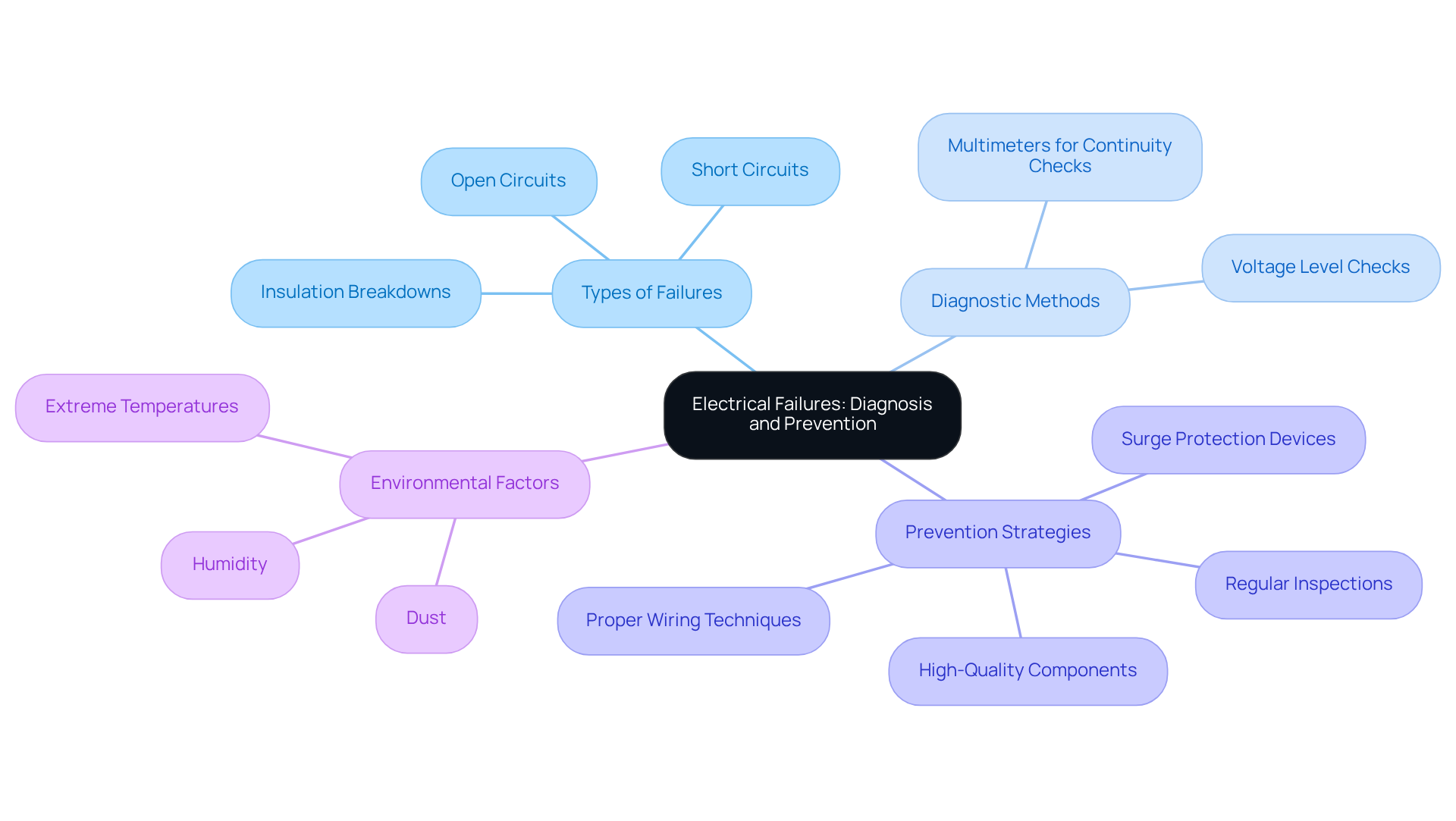
Noise: Sources and Solutions for Reduction
Noise in axial fan motors primarily originates from three sources: airflow turbulence, mechanical vibrations, and the operation of the axial fan motor. Airflow turbulence, particularly at the blade tips, generates significant aerodynamic noise, often peaking at levels around 99.74 dB, as recorded in the original case (case 0). Mechanical vibrations, caused by imbalances or defects—most notably horizontal cracks, identified as the most disruptive—can further exacerbate noise levels, with vibrations reaching amplitudes of 0.136 ± 0.003 m/s². To mitigate these issues, several strategies can be employed:
- Low-Noise Fan Designs: Utilizing fans specifically engineered for low noise operation can significantly reduce sound levels. For instance, designs incorporating Chevron nozzles have demonstrated noise reductions of up to 41.6% at the outlet.
- Optimized Blade Design: Enhancing blade geometry can minimize turbulence and improve airflow efficiency. Studies indicate that modifications such as wavy inner wall treatments can lower blade tip noise by approximately 9.08%.
- Proper Installation: Ensuring that fans are installed correctly can help minimize vibrations. This includes aligning the fan properly and securing it to reduce mechanical noise.
- Sound-Dampening Materials: Incorporating materials that absorb sound within the fan housing can effectively lower operational noise levels. This approach has been shown to reduce noise by as much as 54.56% in certain designs.
Engineers emphasize the importance of addressing noise sources from the axial fan motor to enhance performance and user comfort. As one engineer noted, ‘Understanding the various types of motor noise is crucial for implementing effective countermeasures.’ By concentrating on these solutions, manufacturers can produce axial fan motors that not only function efficiently but also meet the growing demand for quieter technologies in various applications.
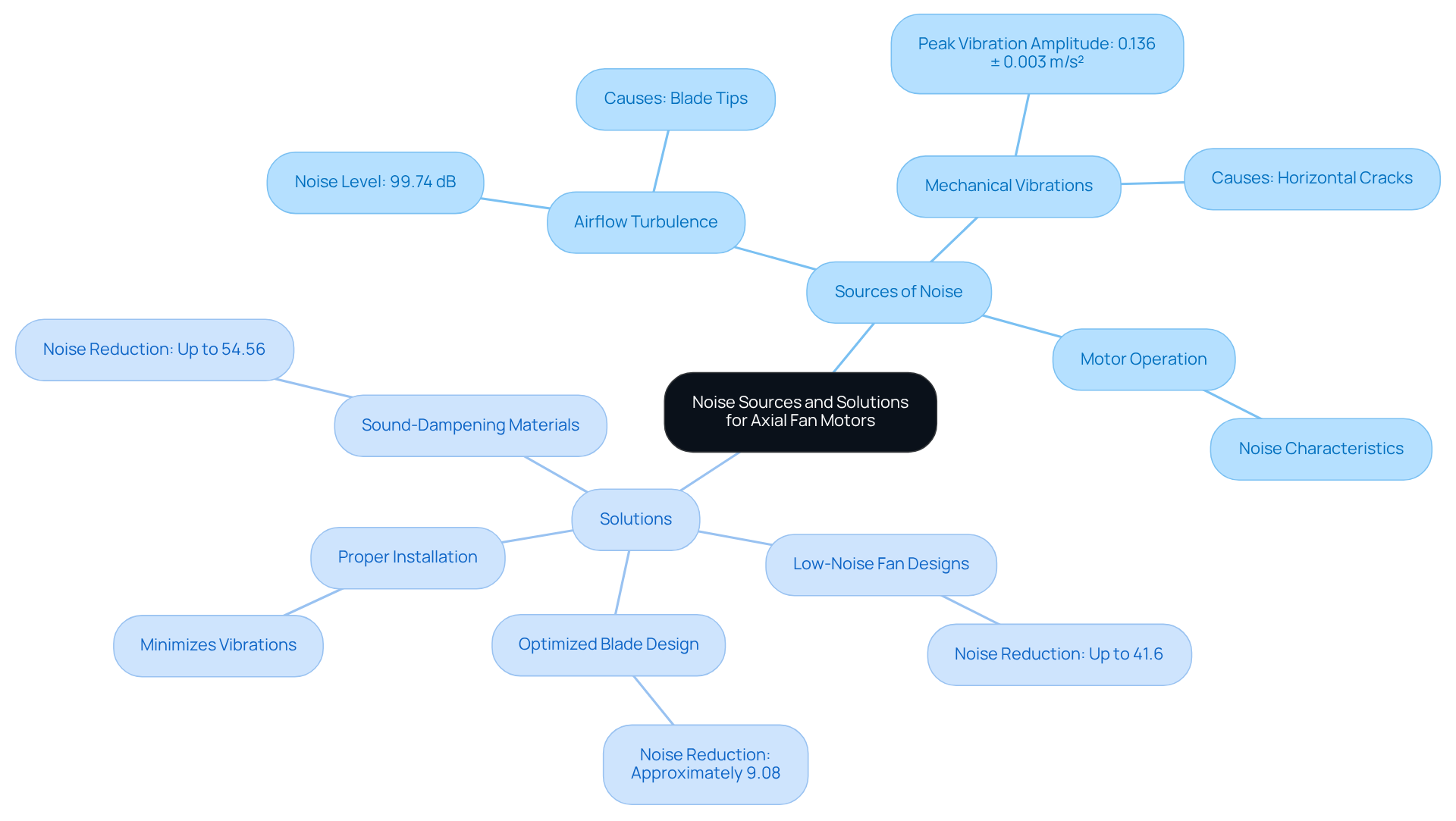
Airflow Restrictions: Causes and Prevention Techniques
Airflow restrictions in axial fans can arise from several factors, including:
- Dust accumulation
- Improper ducting
- Physical obstructions in the airflow path
To mitigate these issues, establishing a is essential, targeting dust and debris on fan blades and surrounding areas. In extremely dusty settings, such as poultry housing, daily cleaning may be required to uphold optimal functioning. Furthermore, ensuring that ducting is appropriately sized and devoid of bends or kinks is crucial, as improper ducting can significantly reduce fan efficiency.
Maintaining a clear space around the fan is also vital. This practice allows for unobstructed airflow, thereby reducing the risk of turbulence and inefficiency caused by dust accumulation, which can lead to increased energy consumption. Frequent checks and upkeep of air filters are necessary to prevent dust from entering the system and resulting in reduced efficiency. By applying these tactics—addressing potential mechanical stress and fatigue failure from dust imbalance—the lifespan and efficiency of the axial fan motor can be greatly enhanced, ensuring dependable cooling in electronic devices.
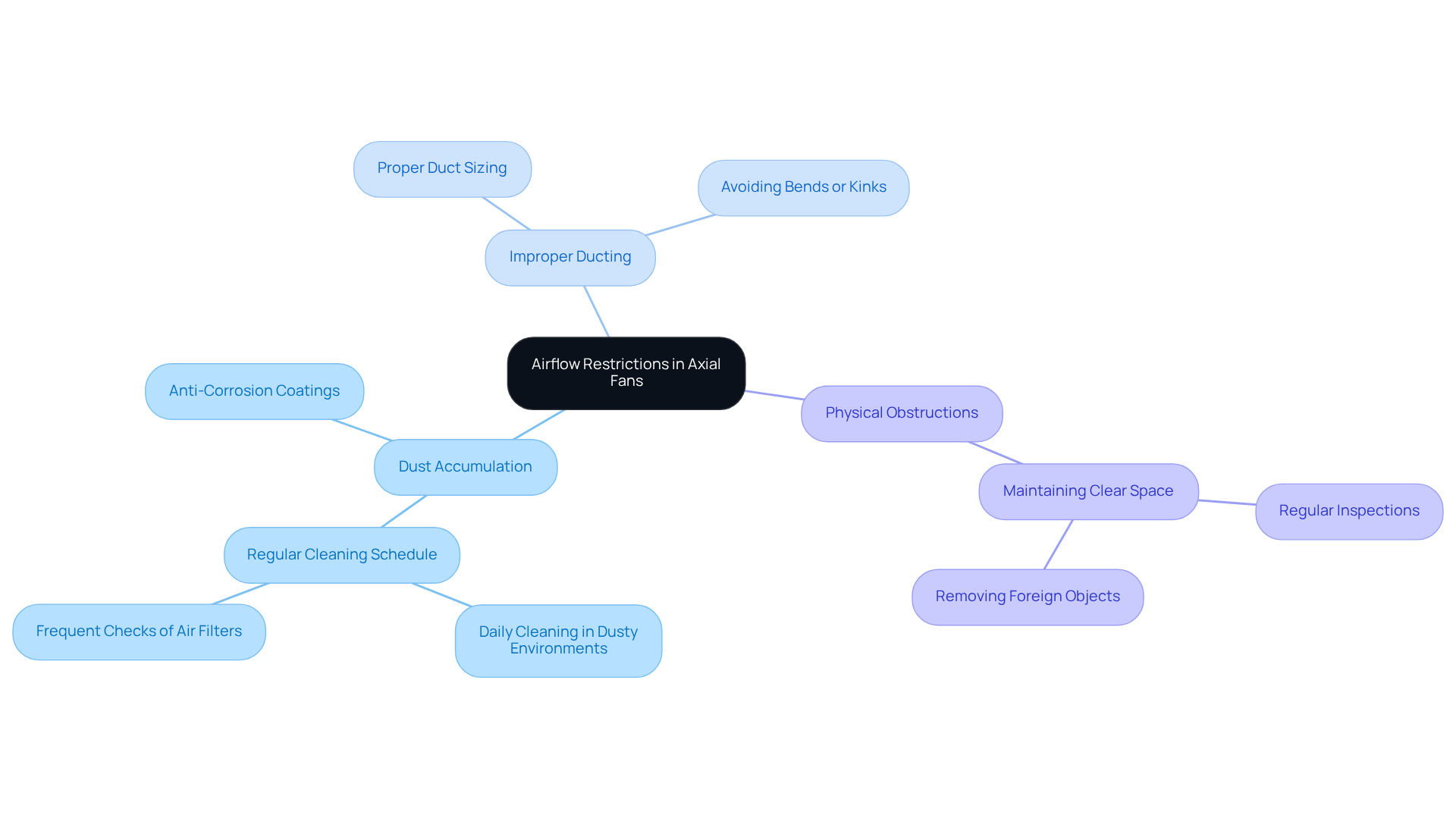
Bearing Wear: Prevention and Maintenance Tips
Bearing wear in axial fan motors can significantly impact the performance and longevity of these motors, often resulting from inadequate lubrication, misalignment, or contamination. To mitigate these issues, it is essential to adhere to the following maintenance tips:
- Proper Lubrication: Ensure that bearings are lubricated according to manufacturer specifications. The choice of lubricant is critical; using the correct viscosity can prevent excessive wear and overheating. Statistics suggest that nearly 40% of premature equipment failures originate from lubrication issues, underscoring the significance of this practice. Furthermore, it is observed that 90% of support failures are attributed to inadequate lubrication (30%), incorrect maintenance (40%), and production defects (20%). This highlights the essential function of adequate lubrication and maintenance practices in preventing component failures.
- Alignment Checks: During installation, confirm that the components are correctly aligned. Misalignment can lead to uneven wear and increased friction, ultimately reducing the lifespan of the components. Regular alignment checks can prevent these issues and enhance operational reliability.
- Regular Inspections: Conduct routine checks of components for signs of wear or contamination. Early detection of wear can save costs and prevent operational failures. Engineers recommend observing lubrication conditions and component functionality to identify potential problems before they escalate. Regular monitoring and adjustment of lubrication practices can enhance machinery reliability.
- Replacement Protocols: Establish a replacement schedule for components based on operational conditions and inspection findings. Prompt substitution of damaged components is essential for sustaining peak performance and avoiding unforeseen interruptions.
- Expert Insights: Engineers emphasize that promptly addressing lubrication issues can significantly enhance the reliability of components. As Daniel Stöckl from NKE Austria pointed out, ‘To ensure the dependable functioning of rolling components, proper lubrication is a crucial and frequently neglected aspect.’ This proactive approach is essential for ensuring the longevity of axial fan motors.
By applying these maintenance strategies, engineers can effectively reduce bearing wear, improve the efficiency of the axial fan motor, and ensure the reliability of cooling systems across various applications.
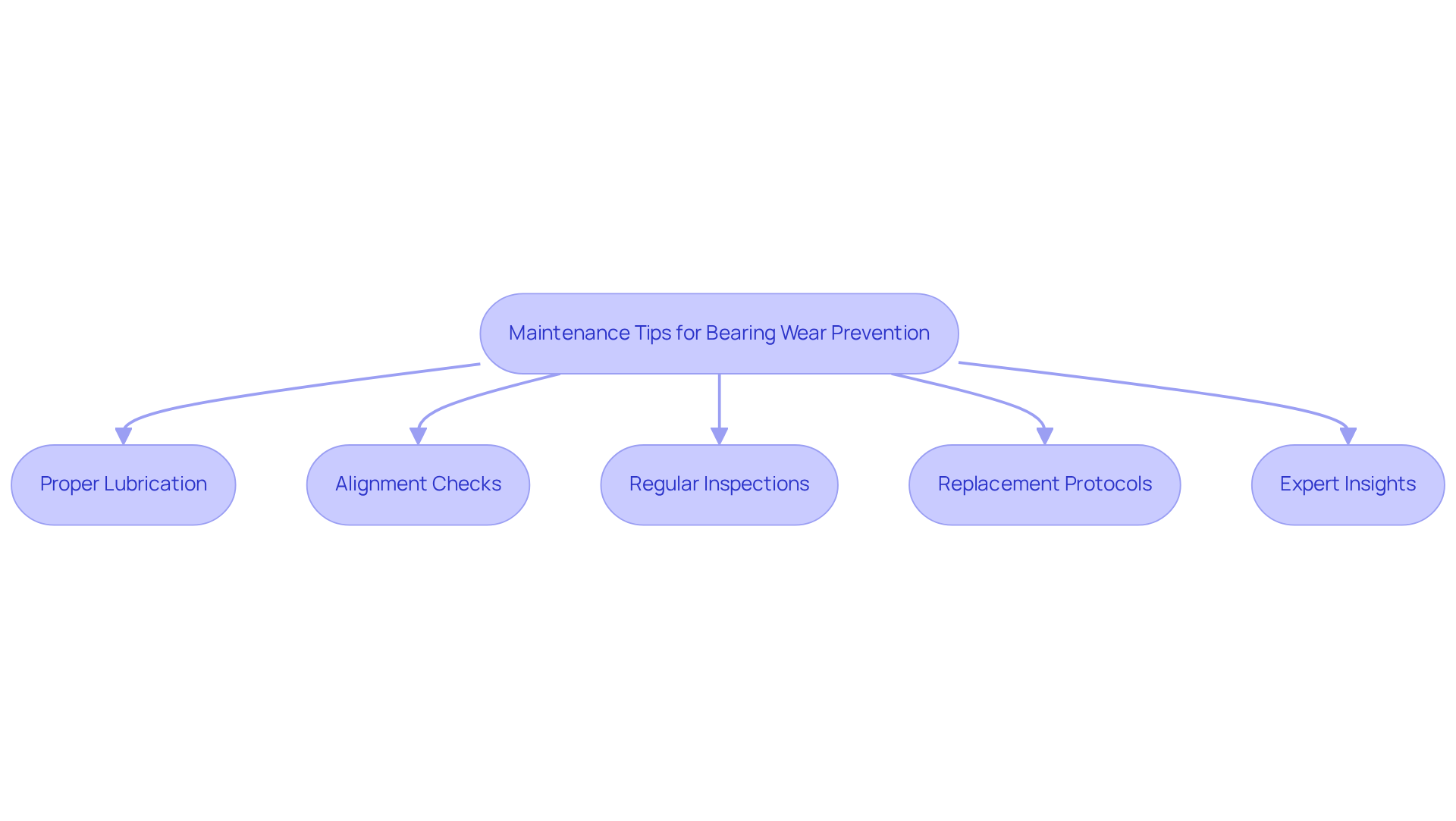
Improper Installation: Best Practices for Prevention
To mitigate issues stemming from improper installation, it is essential to adhere strictly to manufacturer guidelines. Begin by ensuring compatibility among all components and securely mounting the fan to prevent vibrations and operational failures. Utilize the to avoid damaging any parts during the installation process. After installation, conduct a comprehensive inspection to verify that all systems are functioning as intended.
Common installation mistakes include:
- Neglecting to check for proper airflow direction
- Failing to maintain adequate clearance around the fan
- Overlooking the need for vibration isolation
Adhering to these best practices not only improves functionality but also prolongs the lifespan of the fan system.
As pointed out by mechanical engineering specialist Jeff Smoot, “Understanding the complexities of fan technology is crucial for enhancing efficiency in electronic systems,” rendering compliance with guidelines an indispensable element of successful installations.
To ensure optimal functioning, engineers should also arrange regular inspections and upkeep of their installations.
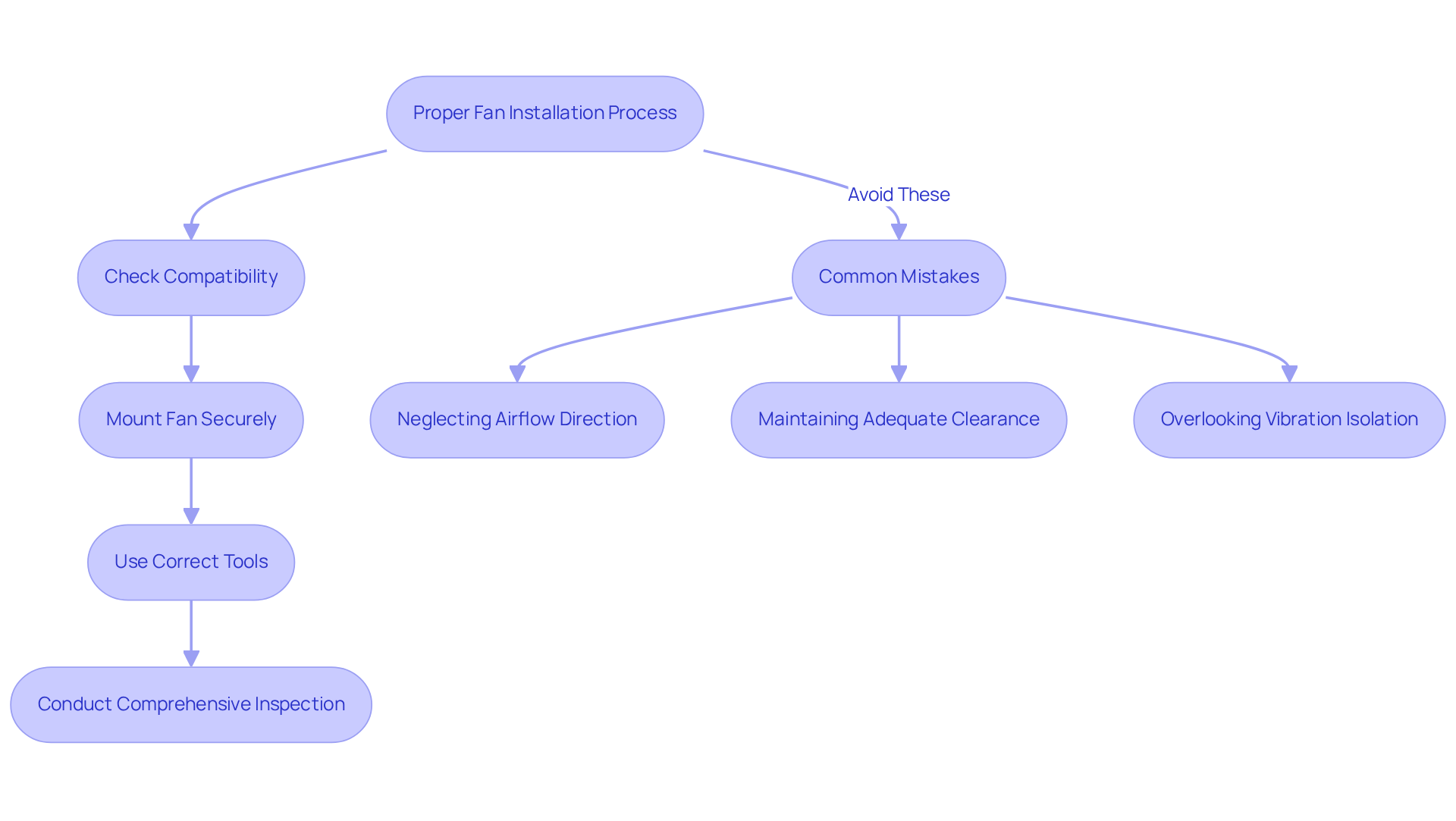
Environmental Factors: Protection Strategies for Axial Fans
Environmental factors such as humidity, dust, and temperature extremes pose significant challenges to the performance and lifespan of the axial fan motor. To address these risks effectively, it is essential to utilize axial fan motors equipped with sealed enclosures or , including stainless steel or coated aluminum. The axial fan motor is designed with features that prevent moisture and dust from infiltrating critical components, thereby enhancing durability. Additionally, the installation of air filters and adherence to a regular cleaning schedule can substantially decrease dust entry, promoting cleaner airflow and reducing wear on the axial fan motor.
Moreover, implementing preventive measures against overheating is crucial. Enhancing ventilation and employing external cooling aids can provide significant benefits. Temperature monitoring systems serve as an essential tool, offering alerts for potential overheating conditions and allowing for timely interventions. Regular maintenance checks are vital to ensure that the protective measures for the axial fan motor remain effective, ultimately guaranteeing optimal functionality and prolonging operational life.
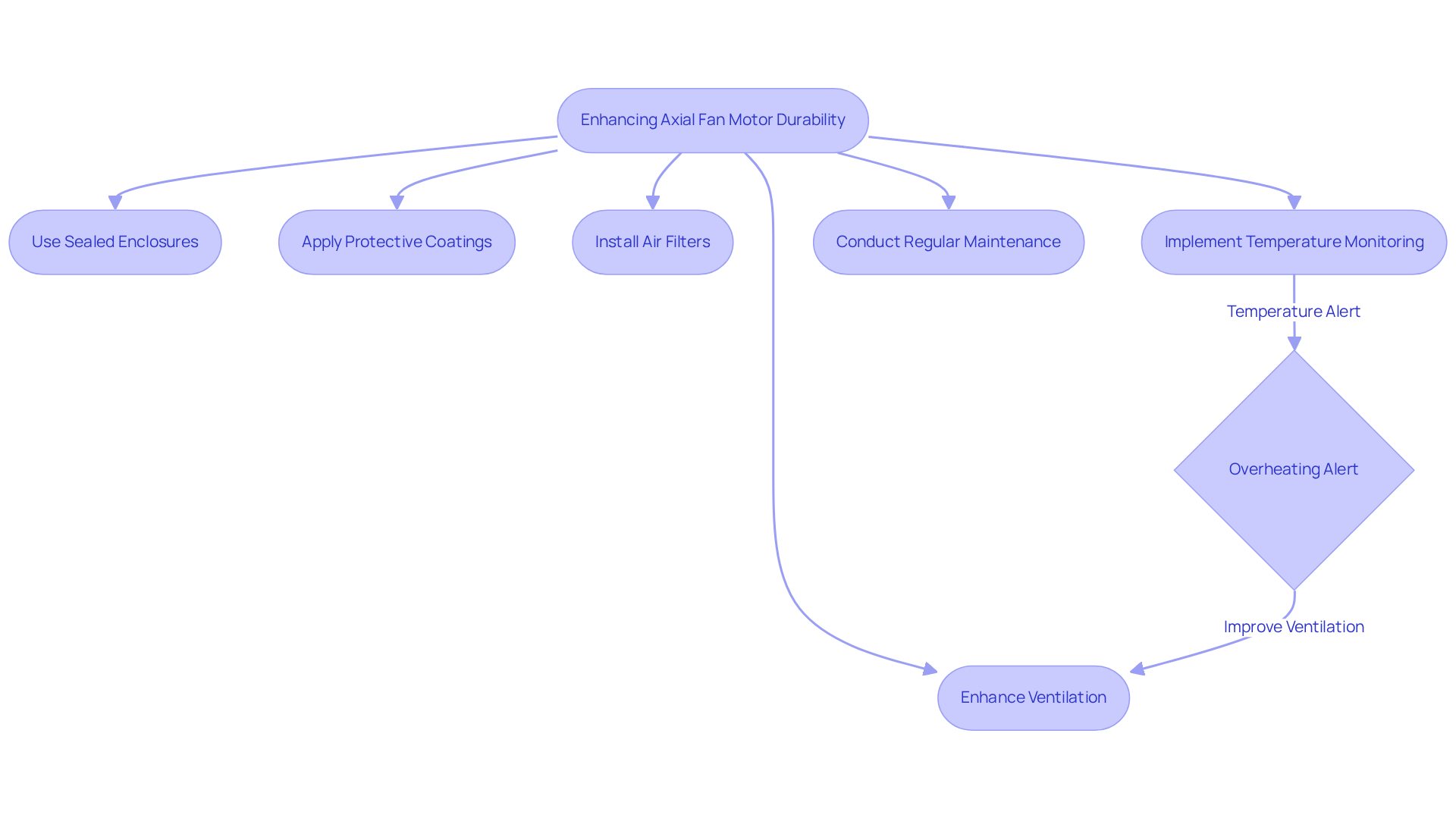
Regular Maintenance: Essential Practices for Longevity
Establishing a consistent maintenance plan for the axial fan motor is crucial for maximizing its lifespan and operational efficiency. The following essential practices should be implemented:
- Cleaning: Regularly clean the fan blades and surrounding areas with a soft cloth or sponge and hot water to prevent the accumulation of dust and debris, which can obstruct airflow and place undue strain on the motor.
- Electrical Inspections: Routinely examine electrical connections for signs of wear, corrosion, or damage. Promptly tighten any loose connections to avert overheating and ensure efficient operation.
- Lubrication: Apply the appropriate lubricant to components in accordance with manufacturer guidelines, taking care to avoid excessive lubrication that may attract dust and lead to premature wear.
- Wear and Damage Checks: Inspect the machinery and components for signs of wear or damage, addressing any issues without delay to prevent costly repairs. Additionally, assess the retention cable for damage, as it is vital for safety.
- Vibration Monitoring: Utilize portable devices or fixed sensors to monitor vibration levels in motors, as excessive vibration may indicate misalignment or component wear.
- Record Keeping: Maintain comprehensive records of all maintenance activities, including dates and tasks performed, to monitor performance and identify potential issues before they escalate.
Implementing these practices not only extends the operational lifespan of the axial fan motor—typically lasting between 15,000 to 30,000 hours for bearings—but also fosters a safer work environment by mitigating the risk of unexpected breakdowns. Regular maintenance can lead to cost savings over time by preventing extensive damage and ensuring reliable operation. Always remember to turn off the power supply before commencing any maintenance work to guarantee safety.

Conclusion
Addressing common issues with axial fan motors is crucial for ensuring their efficiency and longevity. By implementing tailored solutions, engineers can effectively tackle problems such as:
- Overheating
- Vibration
- Electrical failures
- Noise
- Airflow restrictions
- Bearing wear
- Improper installation
- Environmental challenges
Gagner-Toomey Associates exemplifies a commitment to providing innovative strategies that enhance the performance and reliability of these essential components in cooling applications.
Key insights from the article highlight the importance of:
- Regular maintenance
- Proper installation practices
- Proactive monitoring to mitigate potential issues
By focusing on aspects like thermal management, vibration analysis, electrical diagnostics, and environmental protection, engineers can significantly reduce the risk of operational failures and extend the lifespan of axial fan motors. Additionally, implementing sound design principles and utilizing quality materials further bolster the reliability of these systems.
Ultimately, prioritizing these solutions not only enhances the operational efficiency of axial fan motors but also contributes to a broader commitment to sustainability and reliability in various applications. By taking a proactive approach to maintenance and problem-solving, organizations can ensure optimal functioning and minimize downtime, thereby fostering a more efficient and dependable cooling infrastructure.
Frequently Asked Questions
What is Gagner-Toomey Associates known for?
Gagner-Toomey Associates specializes in addressing challenges related to axial fan motors, providing innovative solutions and expertise in cooling technologies.
How does Gagner-Toomey Associates ensure quality in their solutions?
They partner with leading manufacturers to access the latest advancements in axial fan motor design and enhancement, ensuring customized solutions that enhance reliability and efficiency.
What are common causes of overheating in axial fan motors?
Common causes include insufficient airflow, excessive load, and inadequate thermal management, often exacerbated by dust accumulation or blocked ventilation.
What preventive measures can be taken to avoid overheating in axial fan motors?
Preventive measures include ensuring the fan is appropriately sized, using thermal protection devices, performing regular maintenance, and utilizing corrosion-resistant materials.
What should engineers monitor to prevent overheating?
Engineers should monitor operating conditions, avoid excessive loads, and conduct routine inspections for early signs of overheating, such as excessive vibration or unusual noises.
What causes vibration in axial fan motors?
Vibration can be caused by misalignment, imbalance, or worn components, which can impair the motor’s performance and lead to operational inefficiencies.
What techniques can be used to mitigate vibration in axial fan motors?
Mitigation techniques include ensuring precise alignment during installation, balancing fan blades, replacing worn bearings, and using vibration-damping mounts.
Why is vibration monitoring important for axial fan motors?
Vibration monitoring allows for real-time identification of machinery problems, helping to address issues that can impair efficiency and prolong equipment lifespan.

